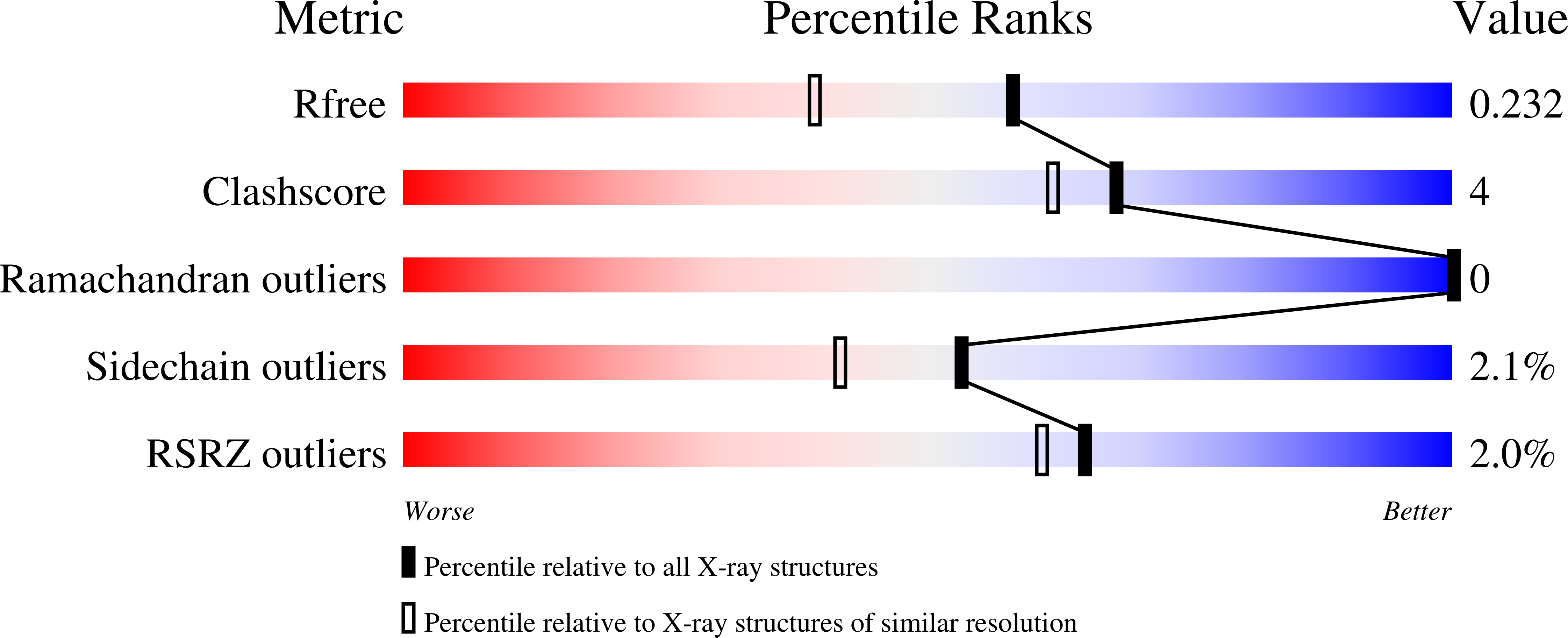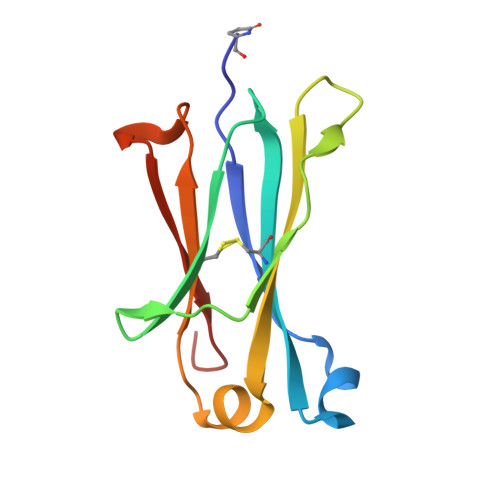Crystal Structure of the Human Igg4 C(H)3 Dimer Reveals the Role of Arg409 in the Mechanism of Fab-Arm Exchange.
Davies, A.M., Rispens, T., Den Bleker, T.H., Mcdonnell, J.M., Gould, H.J., Aalberse, R.C., Sutton, B.J.(2012) Mol Immunol 54: 1
- PubMed: 23164605
- DOI: https://doi.org/10.1016/j.molimm.2012.10.029
- Primary Citation of Related Structures:
4B53 - PubMed Abstract:
Antibodies of the human IgG4 subclass uniquely undergo a process of Fab-arm exchange in which the heavy-chains of antibodies of different specificities can dissociate and then recombine. The mechanism by which the resulting functionally monovalent but bi-specific antibodies are formed is not only key to understanding their biological role, but is also important for the design of therapeutic monoclonal antibodies. Both the hinge region and the C(H)3 domain interface are known to be involved, and of the residues that differ between human IgG1 and IgG4 in C(H)3, residue 409, the only difference at the interface itself, has been implicated. We report the high resolution (1.8Å) structure of the C(H)3 domain dimer of IgG4, and find that Arg409 in IgG4, when compared with Lys409 observed in high resolution IgG1 structures, disrupts a network of water-mediated hydrogen bonding that is conserved in IgG1. Other conformational differences were detected that are a consequence of the presence of Arg409, such as a widening of the separation between residues Asn390 in one domain and Ser 400 in the other, which opens up a groove at the edge of the interface in IgG4 compared with IgG1. The effect of all these differences on the C(H)3 interface, doubled as a result of the interface's two-fold symmetry, is weakening of the inter-domain interaction in IgG4 compared with IgG1. This suggests a mechanism by which Arg409 weakens the C(H)3 interface in IgG4, predisposing this human antibody subclass to Fab-arm exchange.
Organizational Affiliation:
King's College London, Randall Division of Cell and Molecular Biophysics, London, SE1 1UL, United Kingdom.



















